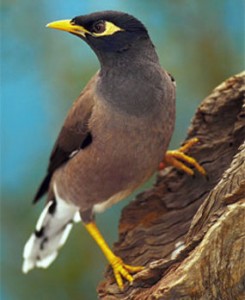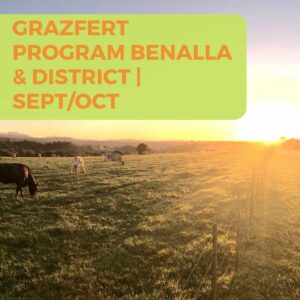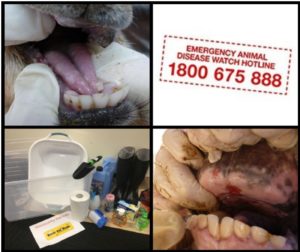 The Benalla Indian Myna Action Group, supported by Gecko CLaN and Benalla Rural City Council, aims to reduce the threat of Indian Myna birds through awareness raising activities and supporting trapping efforts. Indian Mynas pose an extreme threat to Australian native birds and are rapidly invading the Goulburn Broken region.
The Benalla Indian Myna Action Group, supported by Gecko CLaN and Benalla Rural City Council, aims to reduce the threat of Indian Myna birds through awareness raising activities and supporting trapping efforts. Indian Mynas pose an extreme threat to Australian native birds and are rapidly invading the Goulburn Broken region.
Why is the Indian Myna such a problem?
The World Conservation Union has included the Indian Myna in the list of the 100 most invasive species in the world and has described them as an extreme threat to Australia’s native wildlife. They adapt easily to human, urban and rural landscapes. Intelligent and aggressive, Mynas are now often the predominant bird in urban areas all along the east coast of Australia.
Reduced biodiversity
During their breeding season, Mynas take over nesting hollows, harassing and evicting native birds and animals which use the hollows. They kill the chicks of other birds or destroy their eggs.
Reduced aesthetics
Indian Mynas are noisy, aggressive and not afraid of humans. They can raise two broods of young every year, and spend their nights in communal roosts causing excessive noise and fouling.
Damage to homes
Indian Mynas can create fire risks in buildings as they make large, scrappy nests in roofs from sticks and any available rubbish they can find. Their nest building activities can also block rainwater drains and gutters, often causing internal water damage.
Disease vector
Mynas are heavily infested with bird mites which can cause serious skin infections and irritations in humans. Dust from their faeces contains pathogens and viruses, which can cause serious lung infections, gastro etc. Due to their habit of living in close proximity to and interacting with people, mynas are likely to be a vector for spreading avian (bird) diseases which can potentially impact on human health.
Where did they come from?
Indian Mynas occur naturally in southern Asia. They have been introduced into South Africa, North America, the Middle East, Australia and New Zealand. In the 1860s Indian Mynas were brought into Melbourne market gardens to control insects. They were then taken to Cairns and other places in far-north Queensland to control insects in cane fields. These attempts at biological control failed to control insect pests!
What do they look like?
- Are chocolate browb colour with black head and neck.
- 15cm tall.
- A yellow beak, eye patch, feet and legs.
- White wing patches which are obvious when the birds are flying.
- Strut rather than walk.
What can I do about them?
You can help by taking the following steps to limit food and nesting sites:
- Don’t feed them. Clear away food scraps when eating outdoors. Secure compost bins.
- Feed pets indoors, or clear away when they’ve finished.
- Block holes in roofs, or eaves to prevent nesting.
- Plant more shrubs to reduce open areas in gardens.
- On farms and rural properties, feed livestock and chickens only as much as they need, cover the feed bins and clean up any spills.
Indian Mynas are an introduced species and so are not protected in Victoria or any other state in Australia. In Victoria, Indian Mynas are not listed as a pest bird under the Catchment and Land Protection Act 1994. There are no legislative requirements to control them. As they are feral birds, no permission is required to trap and dispose of them. However, obligations exist through relevant animal welfare legislation to treat and dispose of the birds humanely.
REPORT YOUR NUMBERS NOW!
The group aims to record all trapping activity that is occuring in and around Benalla. This enables to the group to see if its awareness raising efforts have been effective. We encourage trappers to report their trapping data to [email protected].
Or report trapping data through the Benalla Indian Myna Action Group Page on Myna Scan.
Step 1. Register on Myna Scan.
Step 2. Email [email protected] to be added to the Benalla Indian Myna Action Group page.
Step 3. Upload trapping data to Myna Scan.
Trap building sessions occur at the CAL Community Farm Men’s Shed every Wednesday afternoon at 1pm. New volunteers welcome!
Traps are available for purchase from the Men’s Shed or Landmark, Peter Davis Rural, North East Produce and Clarkeys Pet Shop in Benalla for $50.
Useful Links
http://www.dpi.vic.gov.au/agriculture/pests-diseases-and-weeds/pest-animals/ag1415-indian-mynas




